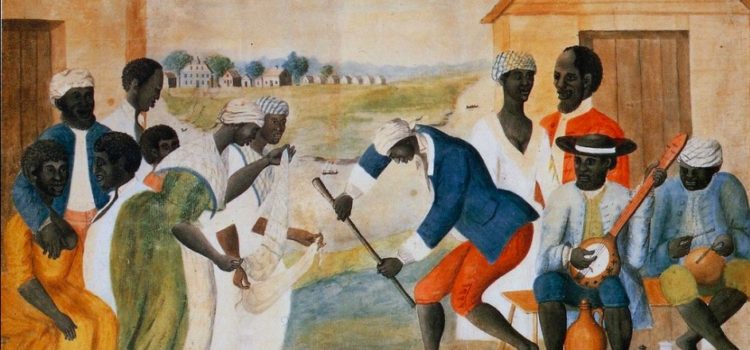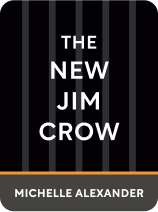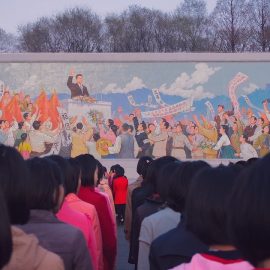

This article is an excerpt from the Shortform summary of "The New Jim Crow" by Michelle Alexander. Shortform has the world's best summaries of books you should be reading.
Like this article? Sign up for a free trial here .
What is the history of Jim Crow laws? How does The New Jim Crow examine modern Jim Crow laws in place?
The history of Jim Crow laws is a pattern of systematic racial discrimination. Using actions that create racial segregation, the rise and fall of Jim Crow came back around to the new Jim Crow.
Read more to understand the history of Jim Crow laws, and the the rise and fall of Jim Crow.
Racial Segregation and the History of Jim Crow Laws
1) White elites committed to racial hierarchy worry about a threat to the social order.
- The Civil War, Emancipation Proclamation, and 13th Amendment formally end slavery, but this was just the starting point in the history of Jim Crow laws. Civil Rights Act of 1866 gives African Americans full citizenship.
- Freed black people provoke fears of danger, and amalgamation with beings considered inferior and vile.
- Poor whites are frightened of losing their social status accorded by skin color.
- The Populist Party accuses the privileged classes at conspiring to keep poor whites and blacks locked into subjugation. “You are made to hate each other” for “financial despotism that enslaves you both.” Racial integration and class-based unity is a centerpiece. The Populists achieve political success.
2) They devise a new method of enforcing racialized social control in the next part of the history of Jim Crow laws.
- Mainly this: Segregation laws are proposed to split poor whites and African Americans. Segregation leads poor whites to retain a sense of superiority over blacks, making alliances unlikely.
- A system of veiled slavery is enacted. 1) States enact convict laws allowing for hiring out-of-county prisoners for little pay. 2) Very tough vagrancy laws (like requiring jobs for all freed black people) create lots of convicts. Treatment is possibly worse than slavery, given that employers are merely temporary, unlike plantation owners. This fades out gradually in the early 20th century.
- States impose poll taxes, literacy tests, and other barriers to prevent black voting.
- The Ku Klux Klan enacts terrorist campaigns against Reconstruction governments and leaders.
3) They collapse resistance across the political spectrum, largely by appealing to the vulnerability of lower-class whites.
- Conservatives implement campaigns of white supremacy, directing poor white hatred at blacks instead of white elites. This shields elites from a mass uprising from the poor.
- The agricultural depression promotes “permission to hate” and scapegoats blacks.
4) The system becomes institutionalized and pervasive, as stakeholders pursue their own incentives and rationalize their behavior. This entrenchment is part of the history of Jim Crow laws.
- Politicians compete with each other by proposing more stringent and oppressive legislation (like prohibiting blacks and whites from playing chess).
The New Jim Crow
The history of Jim Crow laws also includes the rise and fall of Jim Crow. And, now, there is the New Jim Crow. Here is how the New Jim Crow works:
- Use the War on Drugs to arrest large numbers of black men. Promote this through 1) strong financial incentives to stakeholders and 2) legal protection of discretion in law enforcement and prosecution.
- Generally, as long as racial discrimination is not explicitly stated, actions biased by race are allowable.
- Legal protections: race is allowed to be a factor in stopping vehicles as long as it’s not the sole factor; probable cause is sufficient to justify stop and searches, regardless of intent of the officer; lawyers can strike jurors on arbitrary peremptory challenges as long as it’s not explicitly racist.
- In essence, black men are made criminals at higher rates than white men, despite not having significantly higher rates of drug crime.
- Hand down disproportionately harsh sentences to black men, and limit effective legal representation for them.
- As one example, before 2010, 5g of crack cocaine (associated with black people) and 500g of powder cocaine (associated with white people) earned the same 5-year minimum sentence – a literal 1:100 ratio. Analysis of risk of arrest.
- Impose sanctions on ex-criminals outside of prison – like removing access to public housing, welfare, job opportunities, and the right to vote.
- This prevents reintegration, encourages recidivism, and may actively promote crime.
As a result, black people are pushed into the system and kept within it. They are arrested more frequently, handed heavy sentences, then discriminated against when they leave prison.
In turn, their children are heavily disadvantaged as a result and similarly forced into the system; and so the cycle perpetuates.
Insidiously, because the current system does not have explicit racial bias, it’s assumed to be colorblind. Exceptional black achievers like President Obama and Oprah imply that a racial caste no longer exists. This causes a consensus that criminals choose a life of crime and are not being systematically discriminated against. Furthermore, there has been historical black support for the war on drugs.
Alexander argues that ending the New Jim Crow requires broad public consensus that the war on drugs has produced a racial caste and must be dismantled entirely. She doesn’t offer how technically do achieve it, but she does argue that solitary battles like affirmative action will not win the war.

———End of Preview———
Like what you just read? Read the rest of the world's best summary of Michelle Alexander's "The New Jim Crow" at Shortform .
Here's what you'll find in our full The New Jim Crow summary :
- How the US prison population increased 10x in 30 years because of harsh drug policies
- How being "tough on crime" was deeply motivated in discrimination against black people
- Why being convicted for a crime is essentially a life sentence of poverty and return to prison






